HIV and Hispanic/Latino People: HIV Diagnoses
Data for 2020 should be interpreted with caution due to the impact of the COVID-19 pandemic on access to HIV testing, care-related services, and case surveillance activities in state and local jurisdictions. While 2020 data on HIV diagnoses and prevention and care outcomes are available, we are not updating this web content with data from these reports.
HIV diagnoses is one of the six Ending the HIV Epidemic in the U.S. indicators. HIV diagnoses refers to the number of people who received an HIV diagnosis during a given year. In 2019, Hispanic/Latino people made up 29% (10,494) of the 36,801 new HIV diagnoses in the US and dependent areas.c


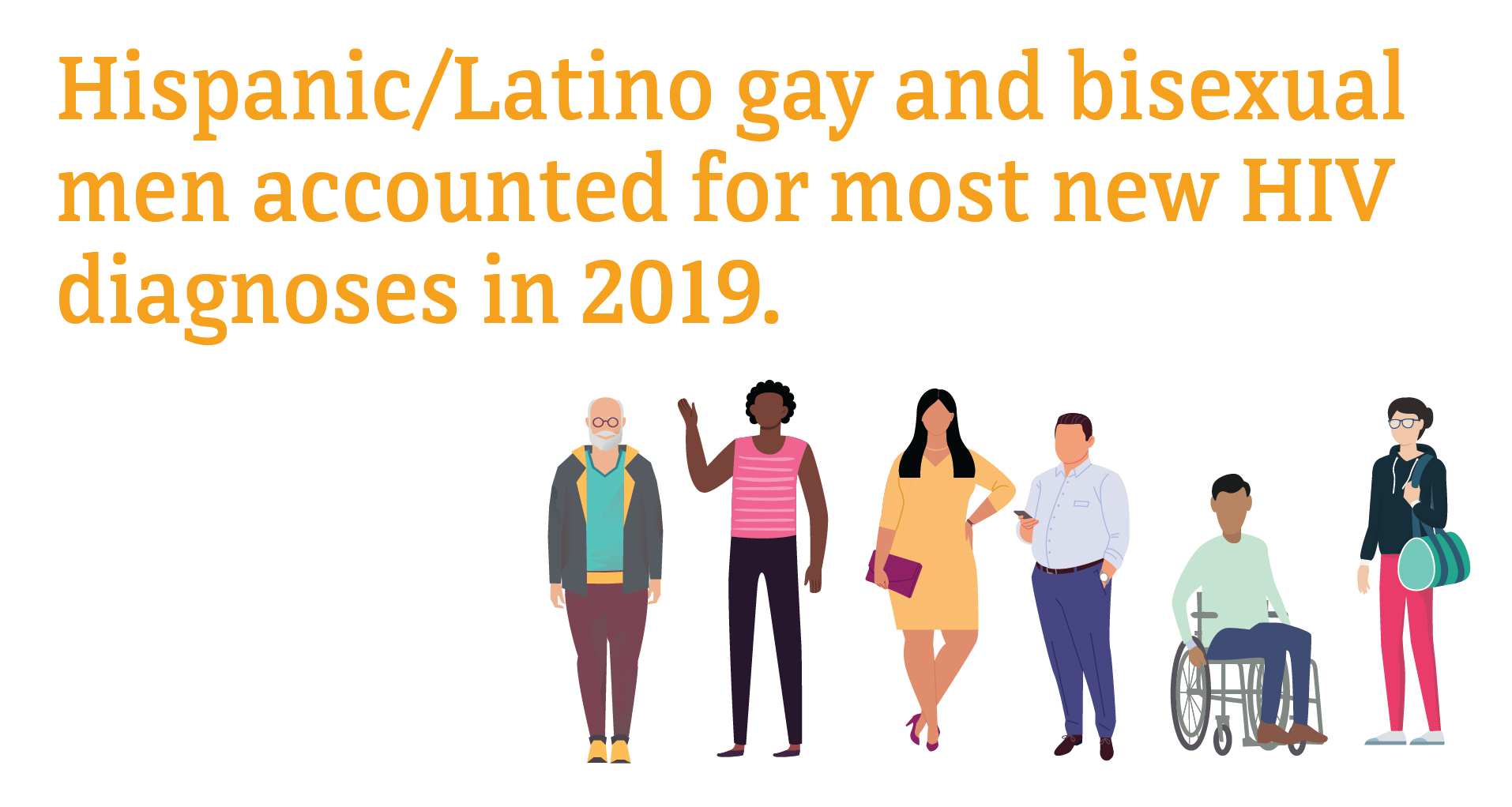
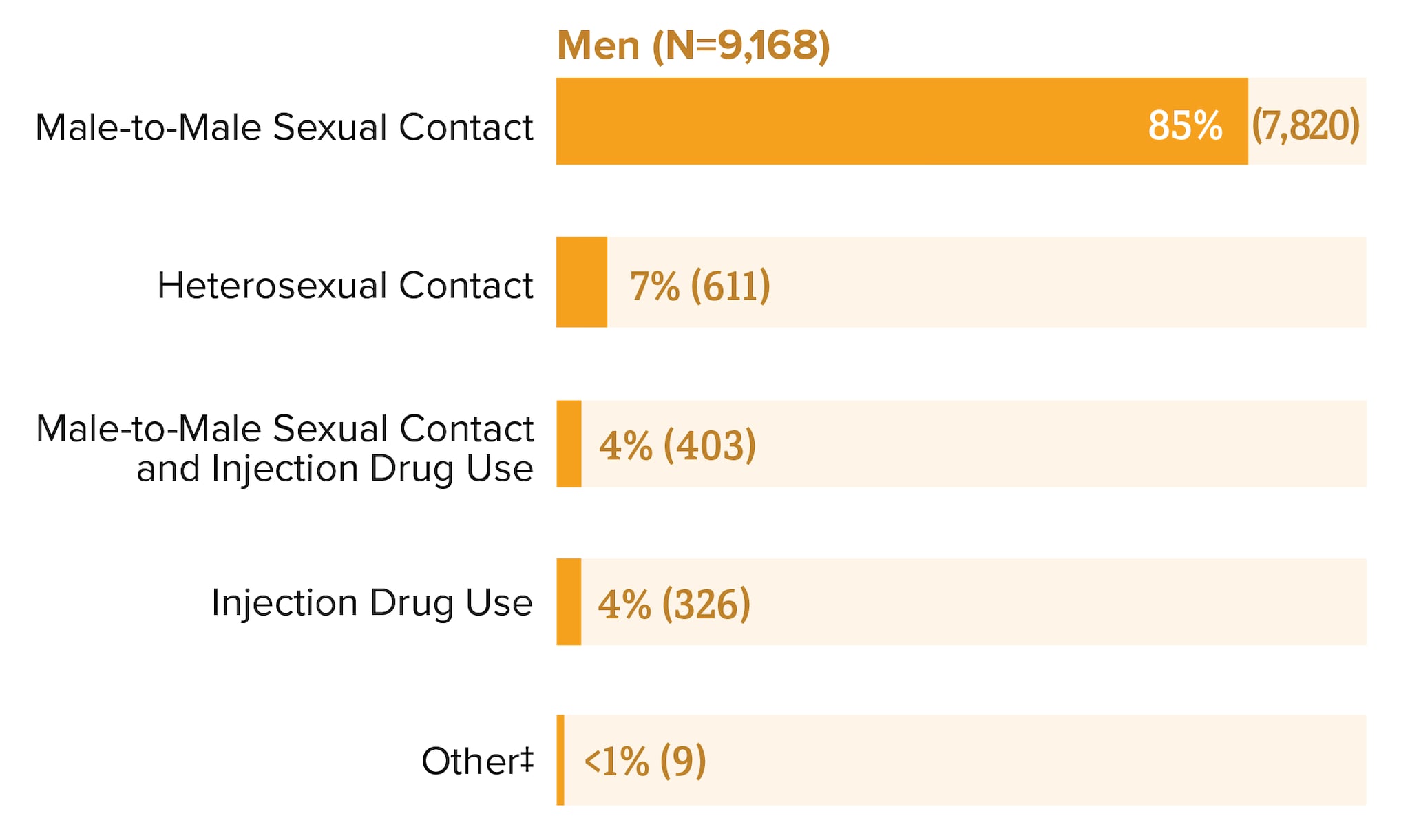
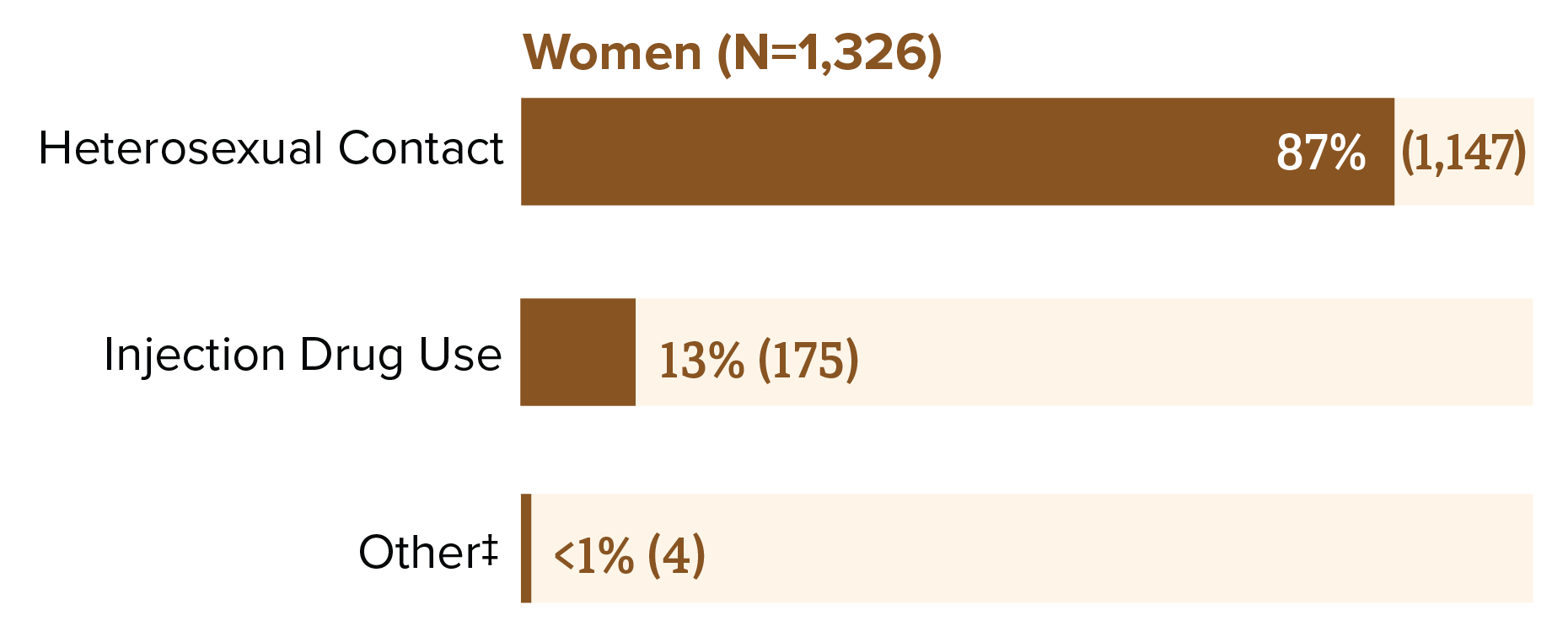
* Hispanic/Latino people can be of any race.
† Based on sex assigned at birth and includes transgender people.
‡ Includes perinatal exposure, blood transfusion, hemophilia, and risk factors not reported or not identified.
Source: CDC. Diagnoses of HIV infection in the United States and dependent areas, 2019. HIV Surveillance Report 2021;32.
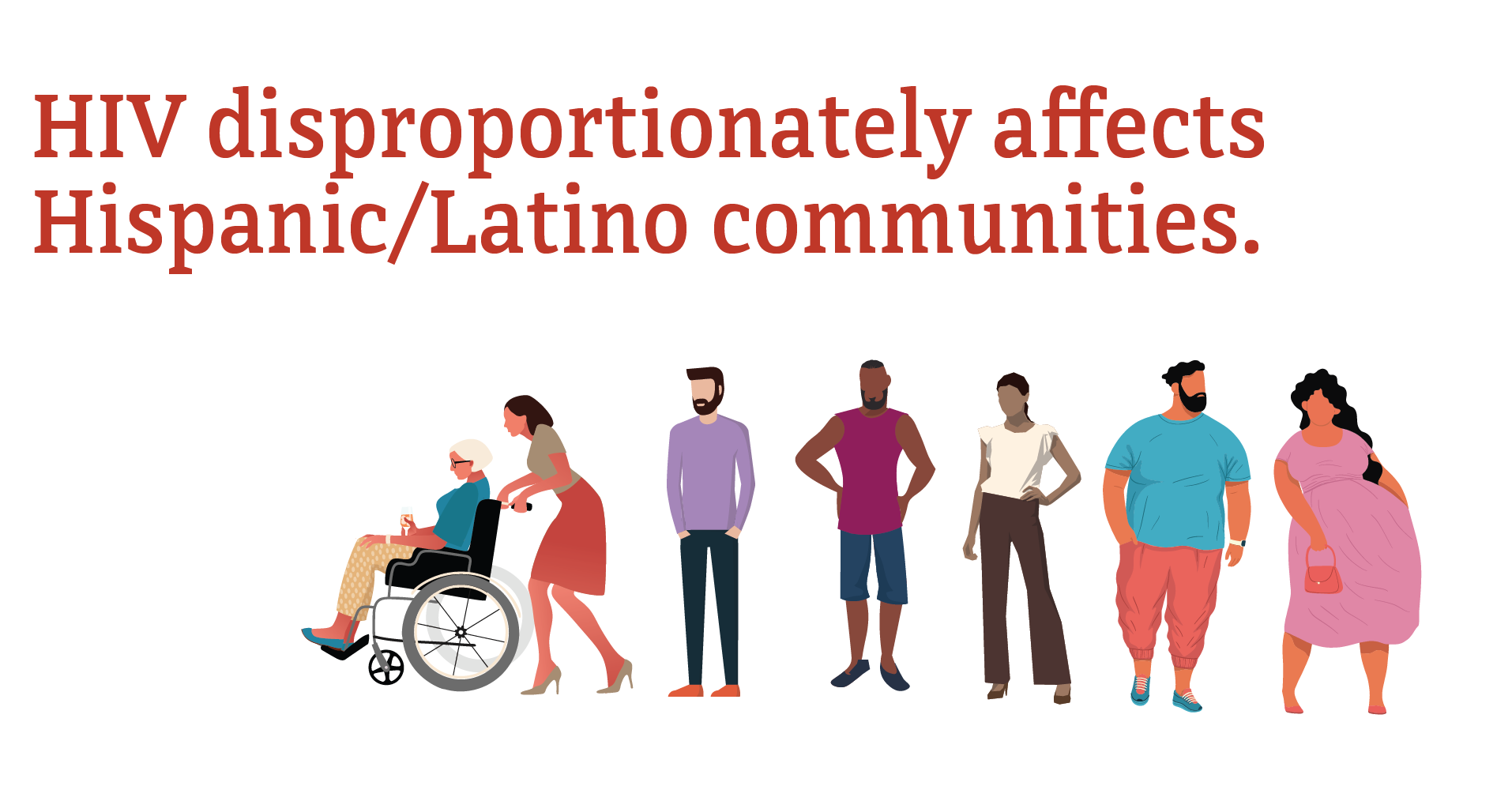
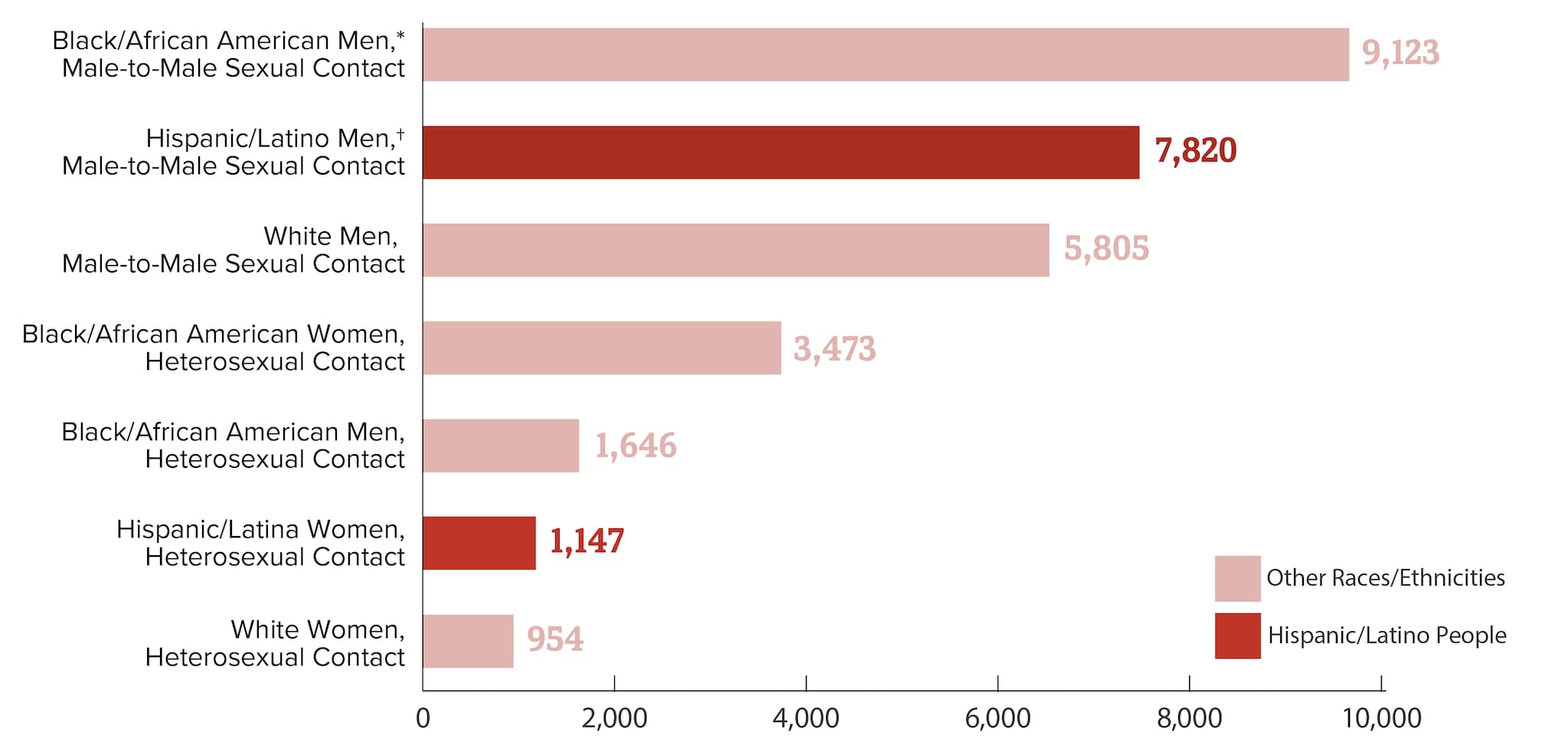
NOTA: las subpoblaciones que representan el 2 % o menos de todas las personas que recibieron un diagnóstico de infección por el VIH en el 2019 no están representadas en este gráfico.
* De raza negra se refiere a personas que descienden de cualquiera de los grupos raciales negros de África. Afroamericano/a es un término que a menudo se usa para referirse a los estadounidenses de ascendencia africana que tienen ancestros en América del Norte.
† Las personas hispanas o latinas pueden ser de cualquier raza.
Fuente: CDC. Diagnoses of HIV infection in the United States and dependent areas, 2019. HIV Surveillance Report 2021;32.
NOTE: Subpopulations representing 2% or less of all people who received an HIV diagnosis in 2019 are not represented in this chart.
* Black refers to people having origins in any of the Black racial groups of Africa. African American is a term often used for people of African descent with ancestry in North America.
† Hispanic/Latino people can be of any race.
Source: CDC. Diagnoses of HIV infection in the United States and dependent areas, 2019. HIV Surveillance Report 2021;32.
From 2015 to 2019, HIV diagnoses remained stable among Hispanic/Latino people overall. Although trends varied for different groups of Hispanic/Latino people, HIV diagnoses declined for some groups, including Hispanic/Latina women and Hispanic/Latino youth aged 13 to 24.
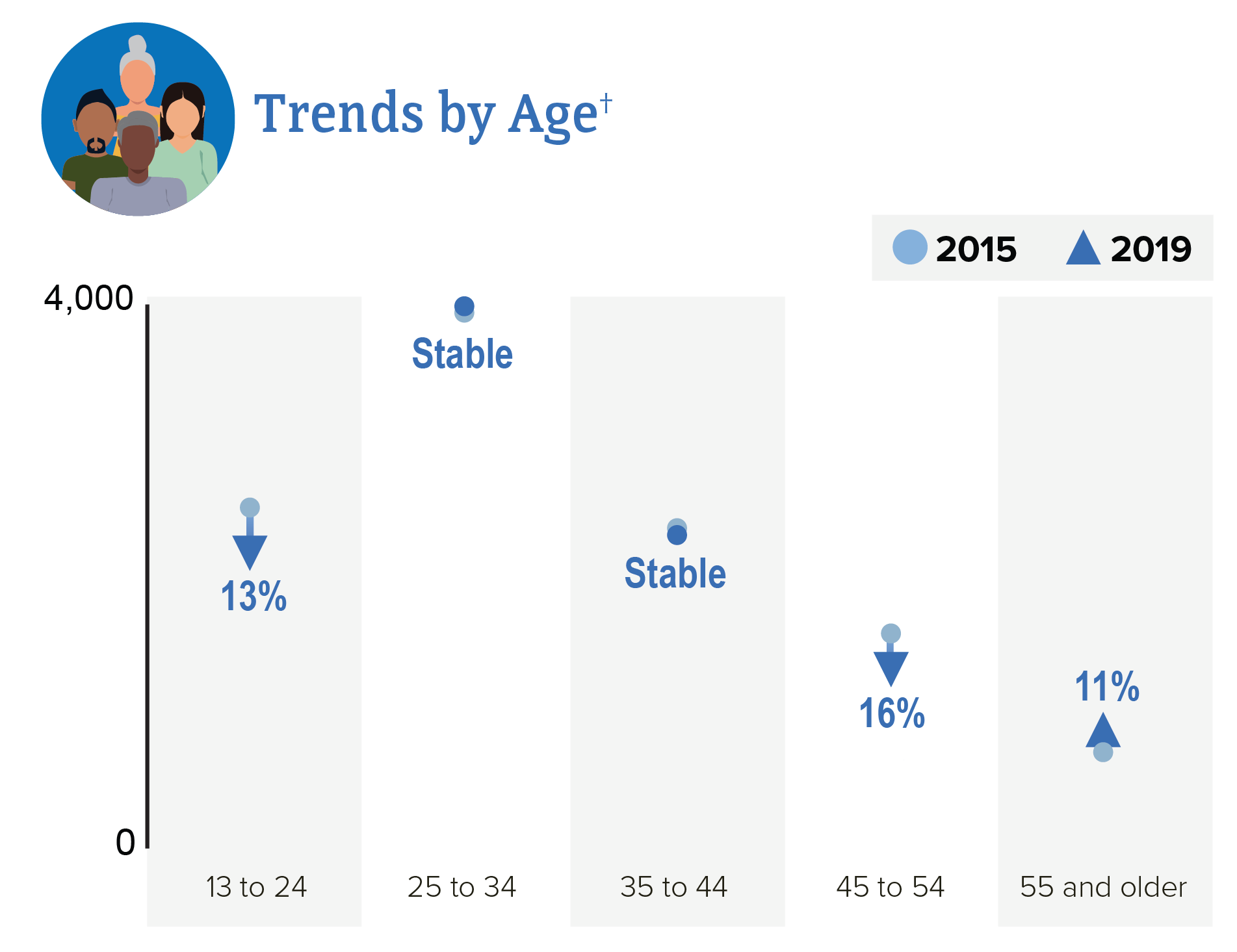
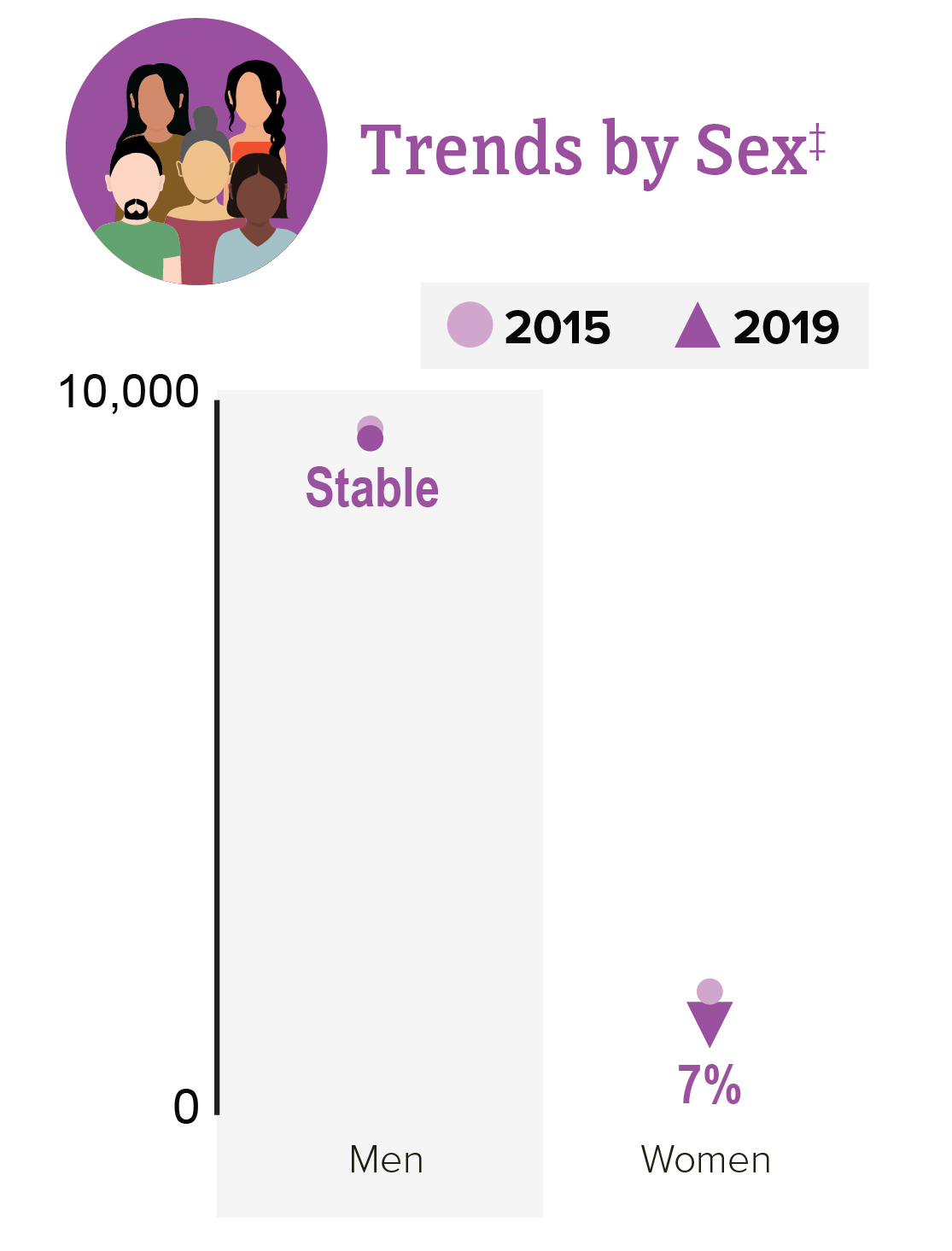
* Hispanic/Latino people can be of any race.
† Does not include perinatal and other transmission categories.
‡ Based on sex assigned at birth and includes transgender people.
Source: CDC. Diagnoses of HIV infection in the United States and dependent areas, 2019. HIV Surveillance Report 2021;32.
- CDC. Behavioral and clinical characteristics of persons with diagnosed HIV infection—Medical Monitoring Project, United States, 2020 cycle (June 2020–May 2021). HIV Surveillance Special Report 2022;29.
- CDC. Diagnoses of HIV infection in the United States and dependent areas, 2019. HIV Surveillance Report 2021;32.
- CDC. Estimated HIV incidence and prevalence in the United States, 2015–2019. HIV Surveillance Supplemental Report 2021;26(1).
- CDC. Monitoring selected national HIV prevention and care objectives by using HIV surveillance data—United States and 6 dependent areas, 2019. HIV Surveillance Supplemental Report 2021;26(2).
- del Rio C. Latinos and HIV care in the Southeastern United States: New challenges complicating longstanding problems. Clin Infect Dis 2011;53(5):488-9. PubMed abstract.